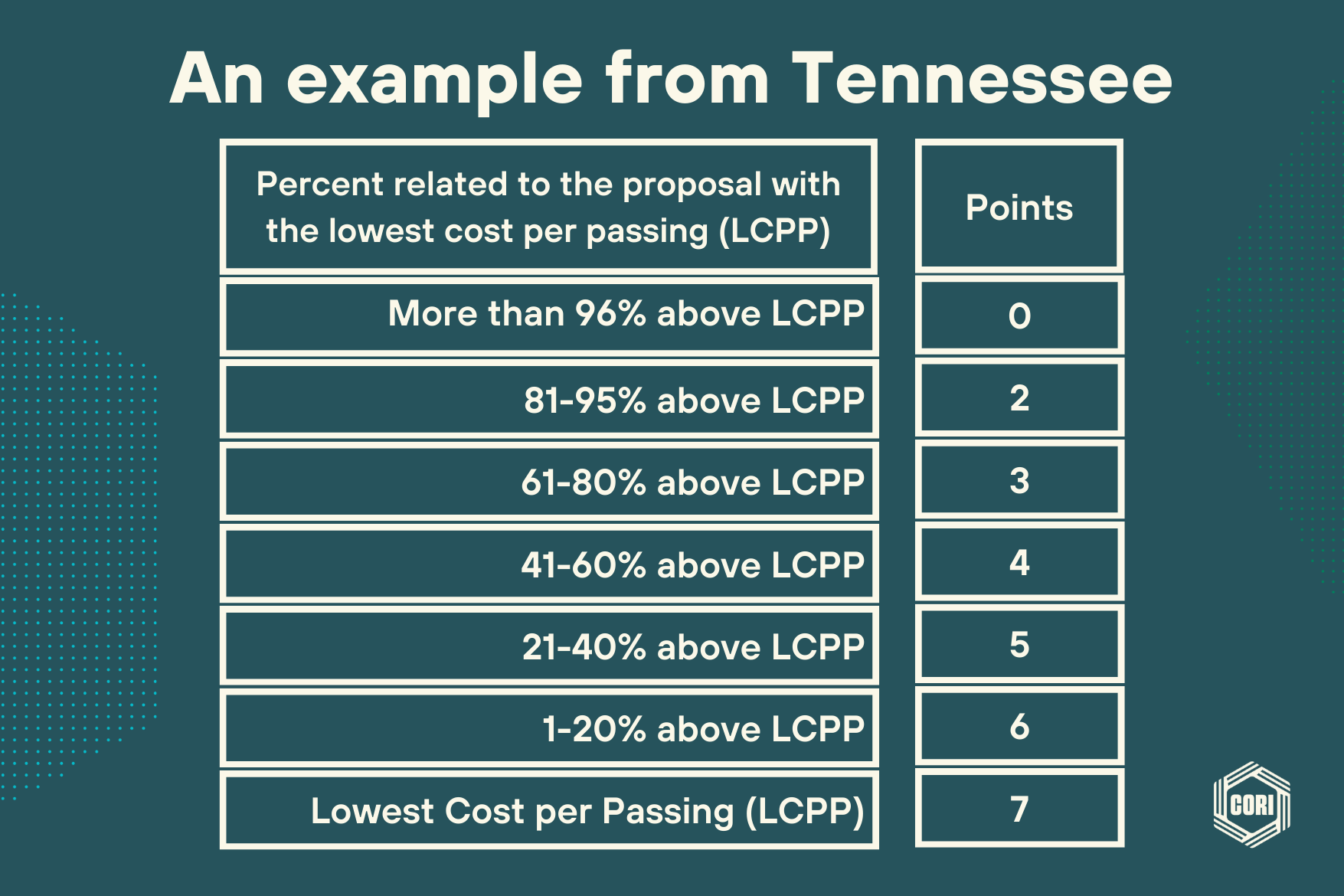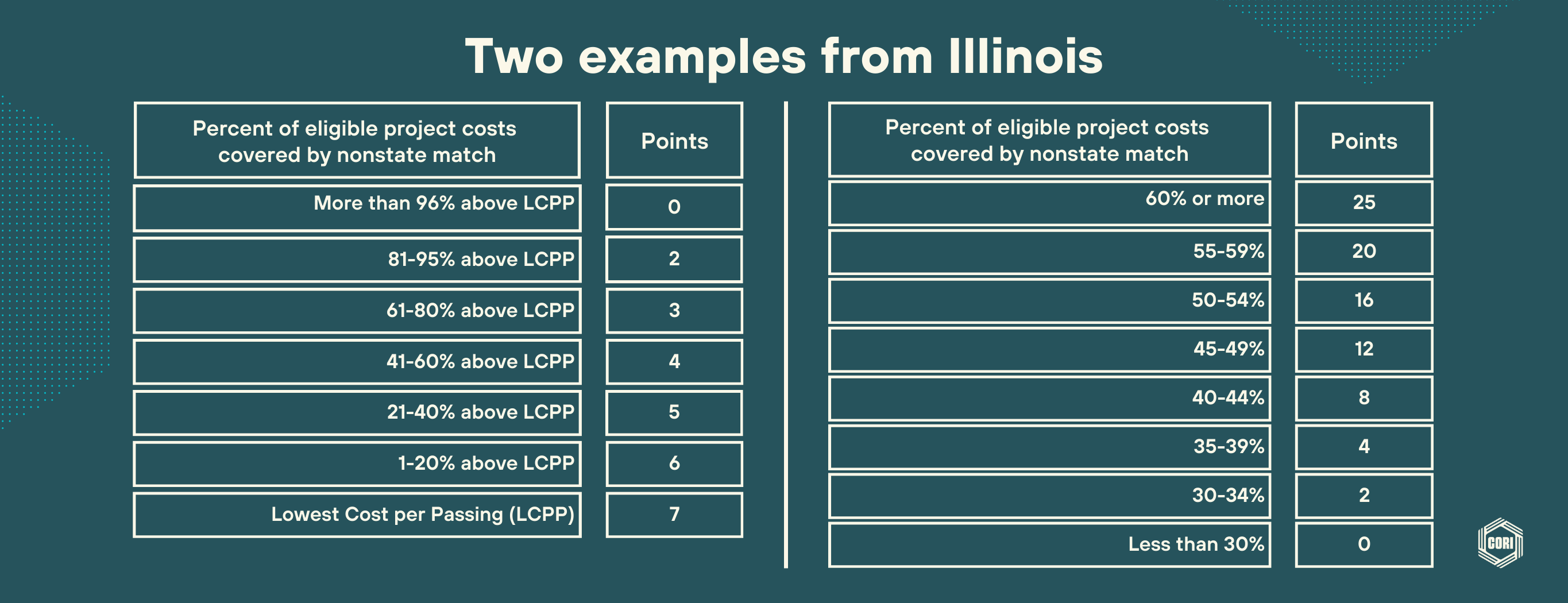BEAD Broadband Funding Guide: BEAD outlay
“BEAD outlay” refers to the efficiency with which applicants will use BEAD funds. This section can be worth anywhere from 40-65% of the total points.
Many states use a “cost model” to benchmark likely costs (or “reference costs”) for unserved areas, and then assign points based on comparison to the benchmarks. Other states compare applicant proposals to each other to determine efficiency.
Some examples on what that looks like:

Questions to ask before you start your application
Does your state benchmark costs based on a cost model, or compare costs to other applications?
- If your state compares costs between applications and allows for applicants to define their own project areas, applicants should try to balance rural (less dense) areas with more dense ones to ensure project costs compete with overlapping projects.
Does your state make explicit allowances for different construction methods, such as climate resilience measures, which may increase BEAD outlay costs, but achieve other aims and allow applicants to recoup points elsewhere?
- Explicitly show the balance between efficiency and priorities such as fair labor, network resilience, and affordability.
Do your state’s project areas allow for more granular optimization of geographies (i.e., smaller project areas) or require full coverage of bigger project areas, like counties or school districts?
- Smaller projects allow ISPs to optimize project areas for efficiency based on proximity to existing infrastructure and density.
Has your state established a negotiation and de-duplication process for overlapping applications?
- Keep track of your state’s prequalification phase if applicants are required to declare the areas for which they plan to apply, as this can help you plan which areas may be open to negotiations.
Strategies for success in this category
Given small ISPs’ lack of scale and resulting structural disadvantages when it comes to construction efficiency, maximizing points in this category will be imperative to creating a competitive application.
Common ways to reduce cost include:
- Varying construction methods, if appropriate (unless higher-cost deployments can recoup points for resiliency, such as in hurricane-prone areas)
- Partnering with middle mile providers or neighboring networks to reduce the cost of bringing internet to an area
- Increasing match share
- Important to note: In-kind match is allowable (see Section III.B.4. of the BEAD funding rules for a list of qualified in-kind match contributions)
Some states also include other questions in this point category — such as, is the business model well reasoned and likely to meet all project milestones? — and small ISPs should strive to go above and beyond to ensure they are awarded full points where they can.
However, considering applicants may not have a lot of leeway to reduce costs, the most important strategy to take at this stage is anticipating how your BEAD outlay will be judged and incorporated into a negotiation phase with your state broadband office.
Preparing for negotiations with your broadband office
With the exception of some electric or telephone cooperatives, small ISPs may not be the most efficient bidders for the entire project area. However, they will be very efficient in areas adjacent to their existing infrastructure. As such, small ISPs should anticipate that many state broadband offices may negotiate with applicants after submission, which could result in adding or removing project areas.
To prepare for this, applicants may want to itemize areas where they are particularly efficient, while also noting how incorporating the more efficient project areas enables them to build in the less efficient areas. (In other words, a blend of denser and less dense areas makes for a more sustainable business case.) Making this clear can help state broadband offices understand how to evaluate full and partial applications as they de-duplicate overlapping awards on an aggressive timeline.
Check out our other resources or schedule a meeting with our team today.
Questions? Get in touch.
If you have any additional questions or would like help with your BEAD application, please contact us.
